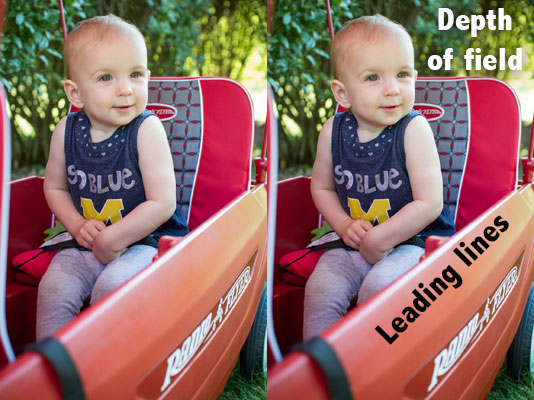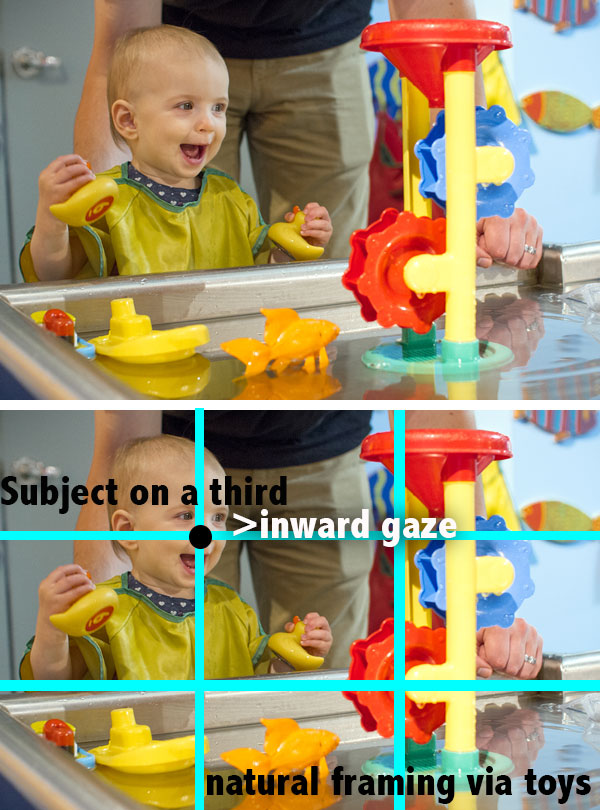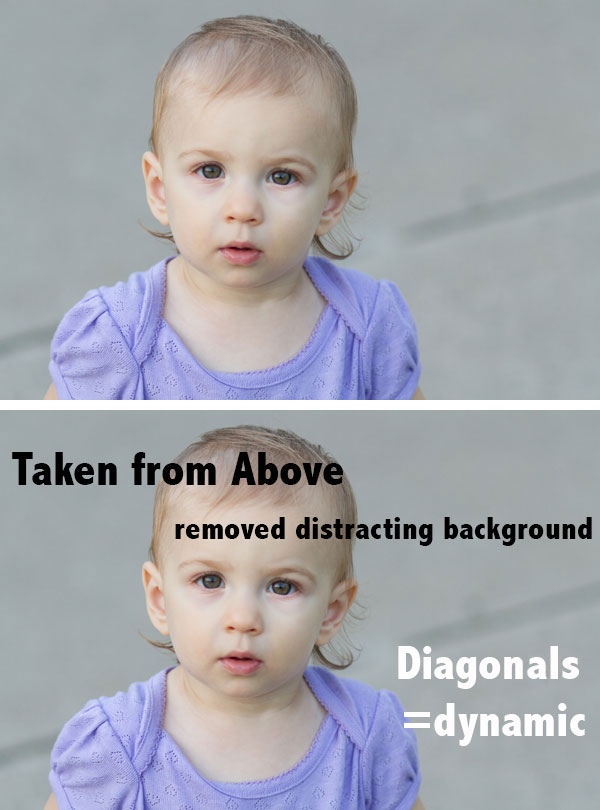Most of us photograph our kids on a daily basis. But how do you elevate your images from being of the subject to telling a story about them? Composition is a great tool to use when creating a portrait.
Photography, unlike many other art forms, is inherently subtractive. There’s a whole environment in front of you – and your task is to show the viewer what’s most important. Here are a few of my favorite ways to accomplish this:
Depth of Field
If your camera has manual settings – or a portrait mode on your smartphone – you can blur out the background. This is usually preferred in portrait photography. Even an implied background will set the scene – and not distract from your precious model(s).
You can always blur the edges of an image using software afterwards, too.

Leading Lines
Remember how railroad track portraits were popular for a bit (don’t try them)? They’re a classic example of how leading lines guide the viewer’s eye right to your subject! If you pay attention, you’ll see them occurring in more natural places. Use them to your advantage!
Framing
Another way to utilize the foreground of an image is to “frame” your child with what’s already in the scene. This helps to tell their story!
Rule of Thirds
Try to imagine the scene is broken up into thirds, both horizontally and vertically. Avoid putting faces directly in the middle rectangle. Having them on one of the “thirds” usually creates more visual interest. The old cliché that “rules are made to be broken” applies here! Symmetry works in certain scenarios.The point of this rule is simply: consider where you’re placing the subject within the frame.
Of course, when photographing young kids, we’re lucky if we catch them in the frame at all. That’s why I often create my “rule of thirds” via cropping the image later!

Gaze
This rule is simple but makes a big difference. You’ll want your kids to look directly into camera, or else into the frame. It disrupts the composition if they are looking off the edge of the frame. In other words: if they’re on the left, they should be looking right, and vise versa.
Diagonal Lines
There was a wedding photography trend about a decade ago, in which photographers were putting horizons and/or people on 45 degree angles. At first, it seemed new and exciting. That’s because diagonals add interest! But, you can find them in more subtle ways than actually rotating your model. Be on the look-out for intriguing diagonals.

Change Your Perspective
If you’ve ever taken a Photography 101 course, you probably had to photograph the same subject from many different angles. This is a great exercise because too often we don’t look beyond straight-on, eye-level. word of caution though: pointing your camera “up” at people rarely looks flattering. Pointing it down often helps to eliminate busy backgrounds.
Remember, cropping is your friend! As moms, we’re mostly paying attention to our children’s expressions. When reviewing your images, ask yourself if everything in the image contributes to the story. I usually find things towards the edges of the frame that are distracting and unneeded.
Do you have any tips on how to keep your kid still during a portrait session?














